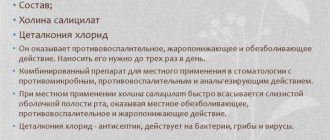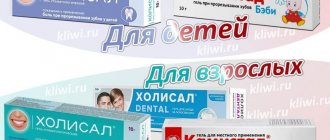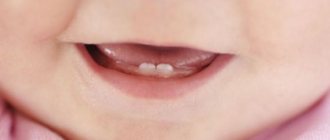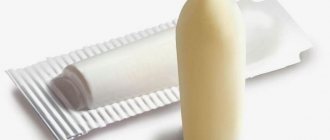Some children experience the period of teething baby teeth and their replacement with permanent molars painlessly and calmly, while others, on the contrary, are forced to feel excruciating pain. In the latter case, only special medications can alleviate the child’s condition, for example, pain-relieving gels during teething.
Nosological classification (ICD-10)
- B37.0 Candidal stomatitis
- K00.7 Teething syndrome
- K05 Gingivitis and periodontal diseases
- K12 Stomatitis and related lesions
- K13.0 Diseases of the lips
- K13.7 Other and unspecified lesions of the oral mucosa
- L43.9 Lichen planus, unspecified
- L51.9 Erythema multiforme, unspecified
- Z100* CLASS XXII Surgical practice
- Z97.2 Presence of dental prosthetic device (complete) (partial)
Side effects and overdose
There were no cases of overdose with this drug. If this happens, you should immediately rinse your mouth with clean water. If necessary, vomiting should also be induced. If you are hypersensitive to salicylates, the following changes are possible:
- excessive sweating;
- gagging;
- nausea;
- tinnitus;
- urticaria or erythema;
- dizziness.
Side effects are extremely rare. A short-term burning sensation may occur after applying the gel. Unpleasant sensations disappear on their own after 3-5 minutes. It is also possible that an allergic reaction may develop.
Pharmacodynamics
Choline salicylate has analgesic, anti-inflammatory and antipyretic effects. It inhibits the activity of cyclooxygenase, the functions of macrophages and neutrophils, the production of interleukin-1 and inhibits the synthesis of PG. It also has antimicrobial and antifungal effects (in acidic and alkaline environments).
The analgesic effect appears within 2–3 minutes and lasts 2–8 hours.
Cetalkonium chloride has an antiseptic effect on bacteria, fungi and viruses.
Cholisal does not contain sugar, does not have a local irritating effect and is well tolerated by patients.
Features of application
The product should be smeared onto the affected areas and rubbed in with gentle massaging movements for about 2 minutes. Apply the gel 2-3 times a day. It is applied before or after meals, and can also be used before bed.
You should not eat or drink for half an hour after applying the drug.
Before applying the product, the oral cavity is prepared. The internal mucous membranes and gums are dried with a cotton-gauze pad. The product is squeezed onto a clean finger. For adults, a strip 1 cm long is enough.
The product is applied to the tissue at the edges of the tooth and papilla. They cover the front and back parts of the dentition. The lingual side is also treated.
The instructions for using Cholisal for periodontal disease are somewhat different. It is placed 1-2 times a day directly into the gum pockets. They also make compresses or rub the drug into the gums. Such procedures are carried out after eating, having previously disinfected the oral cavity with an antibacterial rinse.
It is better not to hold your breath during the procedure, but to breathe deeply.
Cholisal provokes excessive salivation. The resulting saliva is not spit out. It must be swallowed as it accumulates. There is no need to wipe the mucous membranes with a cotton pad or napkin.
Indications for the drug Cholisal®
Infectious-inflammatory, ulcerative-necrotic, trophic diseases of the oral mucosa: stomatitis of various etiologies, gingivitis, periodontitis, damage to the mucous membrane when wearing dentures, trauma to the oral mucosa, pain during teething in children, glandular cheilitis, thrush, small surgical interventions, lichen planus, exudative erythema multiforme (including Stevens-Johnson syndrome) - as part of complex therapy.
Use for teething
It is allowed to use the gel during teething from the age of six months. A strip 0.5 cm long is used at a time. It is strongly not recommended to exceed this dosage.
Before the procedure, the mucous membranes are dried with a cotton pad. Only after this the gel is applied to the inflamed areas. It is rubbed into the baby's mucous membranes with gentle circular movements, without applying excessive force.
After applying the drug, you need to keep the child in a horizontal position so that he does not choke on saliva.
You can use the medicine for teething a maximum of 3 times a day. The interval between procedures should be at least 4 hours.
The analgesic effect is observed 3 to 5 minutes after application of the product and lasts from 2 to 8 hours. The course of treatment ends immediately after pain is eliminated.
Possible consequences of use
The medication contains anise oil, which can cause excessive salivation. For adults, this phenomenon does not pose any danger. With young children the situation is somewhat different.
Infants cannot yet swallow all the saliva that is released. Liquid begins to flow out of the mouth, causing irritation of the skin. The child may choke and begin to cough heavily. Therefore, the topical remedy should be used with caution.
Negative changes are also observed if the rules for using the medicine are not followed. The most common violation is neglect of sterility. If the medication is applied with dirty hands, there is a risk of infection.
Naturally, this does not bring relief. The condition is getting worse. Additional antimicrobial therapy is required. The course of treatment will be longer.
Popular dental gels for teething
At the moment, gels for teeth and gums are presented by many companies. To make your choice easier, let's look at the most popular ones.
Dentinox
It is a transparent gel with a yellow tint and a distinct scent of mint and chamomile. Using Dentinox gel for preventive purposes allows you to achieve painless and normal formation of the first incisors, primary and subsequent molars. This drug also prevents inflammation of the oral mucosa (stomatitis), irritation of the gums and any painful sensations.
- Composition 1 g of the drug . Active ingredients - tincture based on chamomile flowers (150 mg), polidocanol 600 (3.2 mg), lidocaine hydrochloride (3.4 mg); excipients - xylitol, carbomer (974 P), sorbitol, propylene glycol, polysorbate 20, levomenthol, purified water, sodium edetate, saccharin and hydroxide.
- Side effects . The appearance of a slight burning sensation, redness and irritation. In some cases, allergies may develop, including contact allergic reactions, itching, skin rashes and angioedema. If any of the side effects occur, stop using the product and consult a doctor.
- Contraindications . Hypersensitivity to the substances of the drug, the presence of open wounds on the mucous membrane in the oral cavity. Due to the sorbitol content, Dentinox is not recommended for the treatment of children with congenital fructose hypersensitivity.
Cholisal-Gel
Compared to cooling gels based on lidocaine, Cholisal has a pathogenetic effect aimed at getting rid of the cause of pain in this process - swelling and inflammation.
After application to the surface of the gums, the active substance of the drug, choline salicylate, is absorbed by the mucous membrane and relieves local inflammation: compression and swelling of nearby tissues are reduced, due to which the pain effect disappears. The adhesive base of the gel ensures a rapid onset of the effect (after 2-3 minutes), as well as its long-term retention, which allows Cholisal to eliminate unpleasant sensations during teething in children for up to 8 hours in one application.
- Composition per 1 g of product . Cetalkonium chloride (100 mcg), choline salicylate (87.1 mcg); auxiliary components - anise seed oil (1.61 mg), methyl parahydroxybenzoate (1.5 mg), ethanol 96% (390 mg), hyaetellose (20 mg), glycerol (50 mg), propyl parahydroxybenzoate (0.8 mg), water (up to 1000 mg).
- Side effects . Allergy; A short-term burning sensation may occur in the area of application of the product, which can be eliminated independently.
- Contraindications . Hypersensitivity to salicylates, as well as other components of Cholisal. When treating a child under 1 year of age, caution should be exercised.
Kalgel
Designed to eliminate pain during teething in children aged 5 months and older. Calgelalidocaine, which is part of the product, helps block the excitability of the membranes of the most sensitive nerve endings, and cetylpyridinium chloride is responsible for suppressing harmful microorganisms.
- Compound . Cetylpyridinium chloride (10 mg), lidocaine hydrochloride (33 mg); auxiliary components - xylitol, sorbitol solution 70%, glycerin, PEG-40 castor oil, ethanol 96%, xylitol, hydroxyethylcellulose 5000, laureth-9, sodium saccharin, hydrogenated concentrate, macrogol 300, vegetable flavor, levomenthol, caramel E150, purified water .
- Side effects . Allergy, as well as local irritant effect with prolonged use.
- Contraindications . The presence of hypersensitivity to the main and auxiliary substances of the drug, liver or kidney failure, bradycardia, heart failure of the II or III degree, arterial hypotension, intraventricular conduction disturbance.
Pansoral “First teeth”
The most popular herbal gels to ease teething without anesthetics. At the same time, the plant extracts included in the composition have a softening and soothing effect on the gum mucosa.
- Compound . Extracts of marshmallow root (49.75 mg), saffron flowers (1 mg) and Roman chamomile (49.75 mg); excipients: sodium methylparaben, glycerol, sodium propylparaben, purified water, sodium saccharin, carbomer, sodium benzoate, Irish moss and triethanolamine.
- Side effects. Not identified.
- Contraindications . Newborns up to 4 months, hypersensitivity to the components of the drug.
Kamistad
Refers to the number of dental gels for small children, used at 3 months and later. Kamistad has a quick pain-relieving effect and allows you to temporarily normalize the child’s general well-being. Due to the high content of lidocaine, treatment of children under 12 years of age should be carried out only as prescribed by a pediatrician.
- Compound . Active ingredients: tincture of chamomile flowers (protects against inflammation), lidocaine hydrochloride (anesthetic for pain relief); excipients: purified water, sodium saccharin dihydrate, benzalkonium chloride, trometamol, carbomers.
- Side effects . If you follow the recommended dosage of the gel, there are no side effects. In rare cases, a burning sensation may occur in the area where the gel is applied, as well as transient hyperemia.
- Contraindications . Hypersensitivity. Not recommended for treating infants under 3 months.
Dentol
Indicated for quick relief of pain in children from 4 months during teething. After application, Dentol begins to act after 1 minute and provides an analgesic effect for 20 minutes.
- Gel composition .7.5%: per 1 g: benzocaine (75 mg); excipients - sodium saccharin, polyethylene glycol 8 and 75, glycerin, red dye, cherry flavor, ascorbic acid, purified water.
- Side effects . If the dosage is observed, no negative effects have been identified. There is a possibility of side effects due to individual intolerance. If swelling, itching, or hyperemia occurs in the area where the drug is applied, its further use should be discontinued.
- Contraindications . The presence of infection or multiple wounds at the site of application of the gel. Hypersensitivity to benzocaine.
Baby Doctor "First Teeth"
The product has a pinkish tint and is odorless and tasteless. Instantly eliminates inflammation and soothes gums. Regular use can significantly facilitate the process of teething without any complications, making it recommended for infants and older children.
- Compound . Calendula (5.8%), chamomile (5%), water (70%), echinacea (5%), methylparaben (0.2%), marshmallow root (5%), plantain (5%), methylcellulose (4 %).
- Side effects . When using the drug in recommended doses and according to indications, there are no side effects.
- Contraindications . Hypersensitivity to herbal components of the medicinal product.
Which gel is better to choose
To determine which teething gels help best, first of all, you need to familiarize yourself with their composition. Thus, the effectiveness of drugs containing lidocaine and other anesthetics directly depends on the amount of these components in them - the higher it is, the faster the pain relief effect occurs. And although pain relief occurs almost instantly, its return occurs just as quickly - usually 20 minutes after applying the gel. Anesthetic-based products include: Dentol, Kamistad, Kalgel and Dentinox.
«
Another type of no less effective gels for teething are preparations based on completely natural or semi-synthetic components. For example, these include: Cholisal, Baby Doctor and Pansoral. Compared to anesthetic-based gels, these products may have a less pronounced but longer-lasting analgesic effect, which is the result of not just blocking pain with plant substances, but eliminating the cause of its development - inflammation of the gum mucosa.
In general, all of the listed dental gels for newborns or teething children, in addition to their own advantages, have a common drawback - the risk of developing allergies. Therefore, when choosing a gel for teething, you should focus both on the allergic status of the baby and on the previously announced features of the action of each of the groups of drugs.
Thus, gels with an anesthetic will be more effective in a situation where a child has severe pain, which cannot be relieved by natural ingredients. And gels for infants based on plant substances are best suited for moderate deterioration in health, when natural pain relief by reducing inflammation will be sufficient.
«
Folk remedies
In addition to what has already been listed, you can turn to traditional methods. There are a huge number of them. We offer several popular options:
- Ice. Wrap an ice cube in a soft, clean cloth and gently rub it over your gums. Don't stay in one place. Make sure that the ice itself does not come into contact with the gum under any circumstances. Instead of ice, you can use a chilled terry cloth. Wet it, keep it in the refrigerator and let your baby chew it a little.
- Honey. Before using it, make sure your child is not allergic. To relieve pain, you need to gently rub a little honey into your gums. This will help the baby sleep.
- Soda solution. To relieve teething pain, prepare a solution: dilute one teaspoon of baking soda in a glass of warm water, and then lightly massage your gums with a cloth soaked in the solution.
- Chamomile. This plant has good anti-inflammatory properties and can be used in many ways: making tea or making compresses. For severe pain, it is recommended to use chamomile oil; it should be gently rubbed into the cheek near the place where the tooth erupts.
- Clove oil. This remedy helps relieve acute pain and reduce inflammation. To avoid burning your baby's tender gums, clove oil must be diluted in almond or sunflower oil.
- Tea made from lemon balm, lavender and chamomile. This soothing drink can be drunk with almost no restrictions by both mother and baby.
- Sage tea. The product helps not only relieve pain, but also improve gum health.
- Cold fruits and vegetables. Since ancient times, the process of teething has been facilitated with the help of chilled food. To relieve swelling, give your child cold pieces of carrot or apple.










